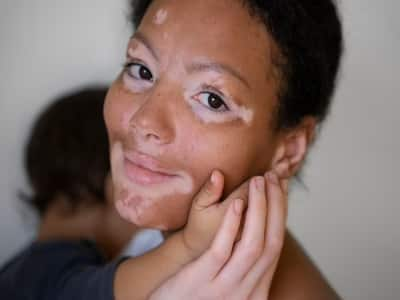Don’t Miss Out on the Latest Updates.
Subscribe to Our Newsletter Today!
What Are The Treatment Options For Vitiligo?

Vitiligo can be treated effectively in the primary stage. If you ever notice a white patch or skin discoloration, immediately consult a skin specialist.
Vitiligo, commonly referred to as Leucoderma, has been listed amongst one of the popular autoimmune disorders wherein the melanocytes of your body are attacked by the immune system. As a result, immense damage is caused in the form of skin discoloration, and development of visible white patches or skin lesions at the region of demise of melanocytes.
The rate of appearance of these whitish spots decelerates in some patients, while it speeds up in others depending on the severity of the disease. You can witness these spots on numerous body parts as hands, genital parts, facial skin, wrists, neck and lower back region. Numerous mythologies are often attached with vitiligo. Some people are of the opinion that vitiligo patients are often psychologically compromised and some inappropriate foodstuffs may be an underlying cause. Another popular myth about vitiligo is that it may be communicable and incurable.
Dr. Rohit Batra, Dermatologist & Vitiligo Expert at Sir Ganga Ram Hospital, New Delhi and President of IADVL Delhi shares his worthy outlook as, "Infinite myths associated with vitiligo often add to a societal pressure wherein the growth of an individual and the survivor loses his self-reverence. Such kind of patients do not want to be a part of social gatherings and face a lot of mental pressure, anxiety and unwanted stress as the white patches start becoming distinctly visible. They get a feeling of embarrassment as they are not able to hide the white spots with a make-up or even after covering their body parts. It is essential to notify the symptoms of depression in a vitiligo sufferer and get him treated immediately for a better living."
Also Read
In recent years, numerous treatments have come up for the treatment of vitiligo which involve topical prescriptions, surgical and laser procedures as well as other home remedies involving alternative therapies. This expansion has widened the arena for vitiligo cure. It is strictly advised that in spite of choosing home treatments, one must consult a dermatologist as soon as possible at the right time for curing vitiligo. This helps in a proper diagnosis and management of the disease.
The treatment methodologies for vitiligo are mostly devised after taking into account the severity and complications of the disease and after carefully monitoring the extent of the contagion within the body of the survivor.
Treatment of vitiligo
Dr.Batra recommends the following treatment plan for healing vitiligo:
- A topical treatment: Your dermatologist may recommend a cream or an ointment for treating vitiligo in the primary stage. They are basically corticosteroids and strong anti-inflammatory agents. An early treatment can surely cure the possible signs of vitiligo. A topical skin treatment plan continues for a few months.
- The PUVA Therapy: The treatment is based on light and your doctor will expose your skin to UV light in a controlled manner. A blend of Psoralen, a medication derived from plants and can be applied to affected areas of your skin in a topical manner or given orally. The treatment should be administered for at least thrice a week to a brief span of three months on a minimum for getting an affective outcome. The PUVA therapy is used for healing the vitiligo lesions of the hands, neck region, arms, legs and back.
- Suction blister epidermal grafting technique: It is often used for treating a small portion of a body in a vitiligo survivor. In this method the skin is alienated using vacuum pressure and then implanted on the affected area.
- Melanocytes cell suspension procedure: In this process, the whitish areas are superficially covered without any kind of cut or incision. Your doctor extracts melanin from a healthy portion of your body and then converts it into a liquid form and injects it further into the affected part.
- The melanocyte culture method: In this method, a biopsy of the affected skin is performed, thereafter a small part of the skin is cultured in the laboratory. Then using the skin grafting technique, and the cultured skin is implanted into the affected area.
- Using Oral Janus kinase inhibitors and oral immunosuppressive agents as methotrexate, cyclosporine, biologics and azathioprine.
- Depigmentation technique and using topicalCalcineurin Inhibitors
- Blister grafting, skin grafting and skin camouflage.
- Laser treatment involving Excimer laser technique.
The above treatment options work effectively in most of the patients accompanied with surgical procedures, as pointed out by Dr. Batra.
Do not ignore a white patch or skin discoloration
Dr. Rohit Batra also shared a crucial aspect as, "If you ever notice a white patch or skin discoloration, take quick action and consult your skin specialist before it's too late and the disease progresses reaching an incurable stage. An effective treatment for vitiligo is possible only in the primary stage and one should be aware of the symptoms related to the disease. One should also adopt an optimistic approach and never treat vitiligo survivors in a ruthless manner as it affects their self-confidence, and they experience social dejection and depression as well. Society should deal with such patients with utmost care, supervision and soft apprehension."


